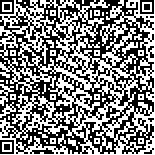| 摘要: |
| [摘要] 目的 探讨缺氧与诱发心律失常的关系。方法 收集207例患者进行回顾性研究,根据24 h心电监护,发生心律失常55例为观察组,未发生心律失常152例作为对照组。对两组患者的肺功能、血气等监测指标进行比较分析,并研究缺氧与心律失常的时间及频次的相关性。结果 观察组患者的年龄、性别、体质指数(BMI)、吸烟率、pH值、收缩压、舒张压、基础性心脏病构成比、心功能分级分布情况与对照组比较差异均无统计学意义(P>0.05)。观察组的第一秒用力呼气容积(FEV1%)(78.4±3.2),显著低于对照组的(90.6±1.8)(P<0.01);血氧饱和度(SpO2)值(0.84±0.06),显著低于对照组的(0.97±0.04)(P<0.01)。观察组患者中冠心病、风心病、高心病患者的SpO2、心律失常发生频次比较差异均无统计学意义(P>0.05),各组间低氧与心律失常发生时间值差异有统计学意义(P<0.05)。观察组心律失常发生频次与SpO2值、FEV1%值存在显著负相关关系[(r=-0.376,P<0.05),(r=-0.331,P<0.05)],与低氧至心律失常发生时间无显著的相关关系。结论 具有心脏基础性疾病且发生心律失常的患者SpO2值、FEV1%值显著低于未发生心律失常的患者,心律失常的发生频次与SpO2值、FEV1%值存在负相关关系。 |
| 关键词: 缺氧 心律失常 心电监护 相关性 |
| DOI:10.3969/j.issn.1674-3806.2015.07.17 |
| 分类号:R 541.7 |
| 基金项目: |
|
| The correlation between the onset time and the frequency of hypoxia-induced arrhythmia |
|
GAO Yan-hong
|
|
Department of Cardiology, Central Hospital of Xinyang, Henan 464000, China
|
| Abstract: |
| [Abstract] Objective To investigate the relationship between hypoxia and induced arrhythmias.Methods 207 patients were collected as research objects for the retrospective study. According to the 24 h ECG monitoring, the patients with arrhythmia were taken as the observation group(n=55). Other patients without arrhythmia were collected as the control group(n=152). Pulmonary function, blood gas, degree and time of hypoxia and the correlation between the onset time and the frequency of hypoxia-induced arrhythmia were analyzed and compared between the two groups.Results There were no significant differences between the two groups in age, gender, BMI, smoking rate, pH, systolic pressure, diastolic pressure and basic heart disease constituent ratio(P>0.05). There was no significant difference between the two groups in cardiac functional grading distribution(P>0.05). FEV1% of the observation group(78.4±3.2) was significantly lower than that of the control group(90.6±1.8), SpO2 value of the observation group(0.84±0.06) was significantly lower than that of the control group(0.97±0.04 )(P<0.01). There were no significant differences in SpO2 and arrhythmia occurrence frequency among the three subgroups of the observation group who suffered from coronary heart disease, AMI and hypertension heart disease(P>0.05). There were significant differences in discrepancy between hypoxia and arrhythmia occurrence time among the different gruops(P<0.05). There were significant negative correlations between arrhythmia occurrence frequency and SpO2 value, FEV1% value in the observation group(r=-0.376, P<0.05; r=-0.331, P<0.05). Hypoxia had no significant correlation to the occurrent time of arrhythmia.Conclusion The patients with arrhythmia combined with basic heart diseases have lower SpO2, FEV1% value than the patients without arrhythmia have. There is a negative correlation between the frequency of arrhythrmia and SpO2 value, FEV1% value. |
| Key words: Hypoxia Arrhythmia Electrocardiogram Correlation |

